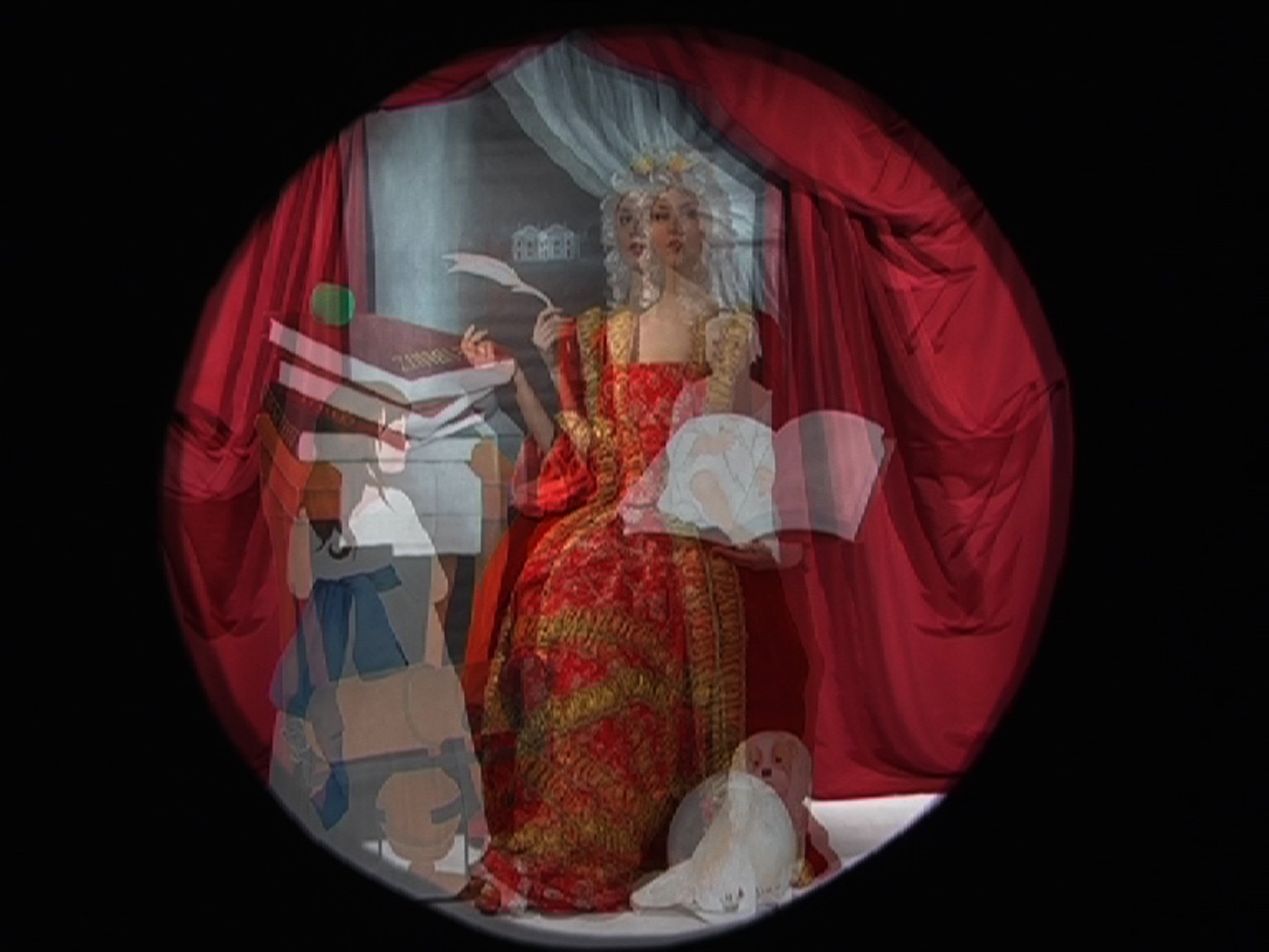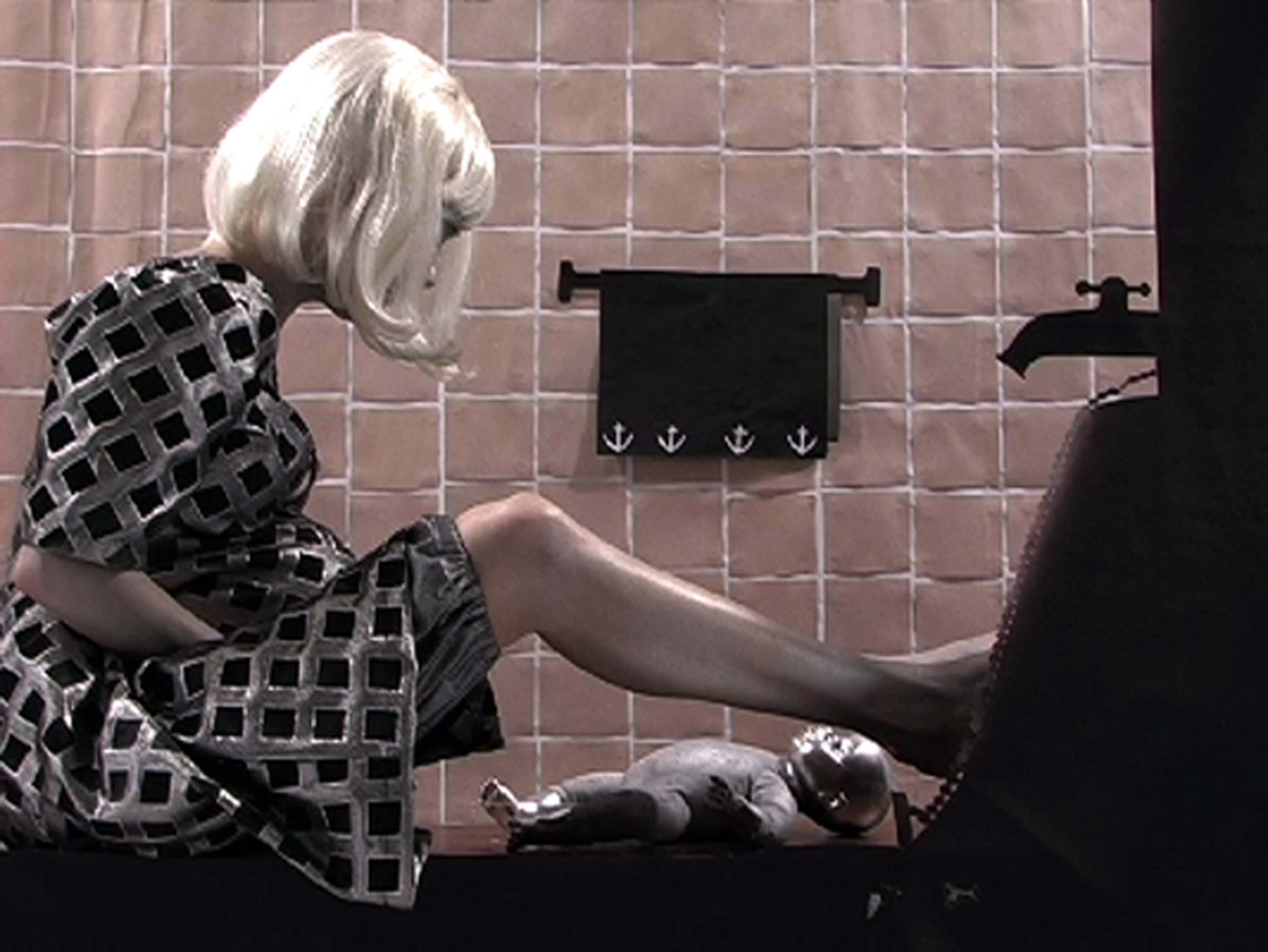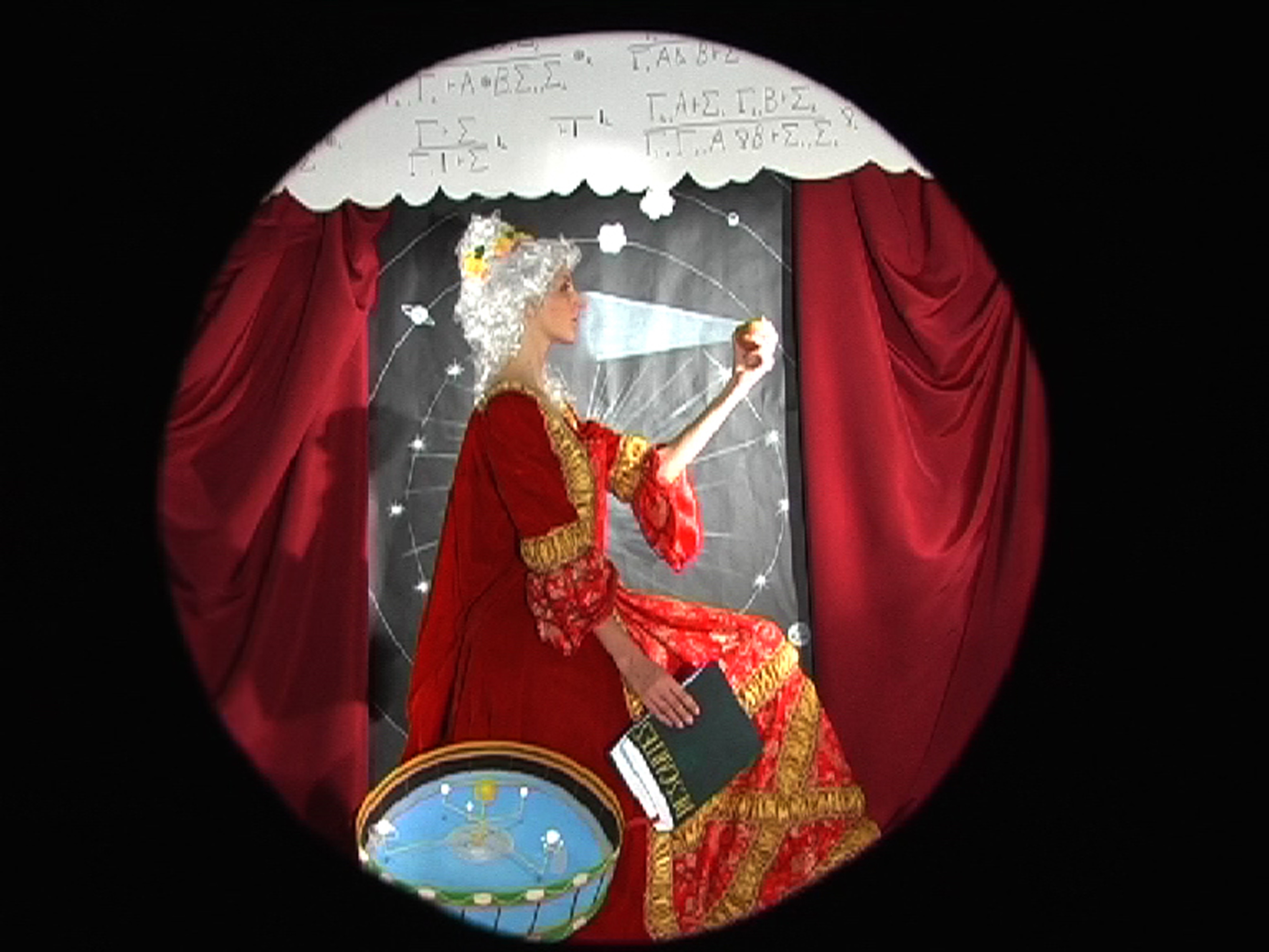Flexible by Nature: Video and the Cultural Production of Concrete Fact
by Christina Corfield
Video Still, On the Nature of Fire (double image), 2010.
As a researcher and a history nerd, I am a lover of the idea of the fact as an unchanging, median force that regulates reality and our consumption of the world around us. However, I am also a lover of the fictive, the creative, and the ludicrous attempts to authenticate fact, whether those attempts take the form of scientific enquiry (substantiated scientific research and development), moralistic fairy-tale-ing (educational narratives), or blatant fantasy (art). Documentary is a platform on which I base my narratives, for it is purportedly based on the representation of fact and the poetic revelation of differing forms of reality. Using its truth-endowing authority to simultaneously delineate boundaries between the real and the unreal, I can show both terms to be interchangeable and equally valid in their own worlds.
Much of my practice is reliant on the work I do before the conceptualization of a piece begins to transform into a concrete artwork. I gather facts, formulate narrative hypotheses, and fabricate vocabularies that use the materiality of the props and sets I make to represent something fundamentally different from the original materials themselves. In this way, the movement of a baby being born and unborn repeatedly is achieved with two pieces of string in Hot Circuit (2009). Or a piece of cardboard painted with acrylic can represent in equal measure a child, a scientific textbook or a puff of smoke in On the Nature of Fire (2010). In these cases, I am asking the viewer to question which form of documentary they are watching–the creation of a world using rudimentary materials and substantiated by a suspension of disbelief, or an obvious low-fi theatrical performance?
Video Still, Hot Circuit (Baby in Bathtub), 2009.
The juxtaposition of the physicality of the worlds I create through my sets and props (the 2D) with the physicality of the actors within those worlds (3D) raises questions about which form is the more valid representation of something "real." To further blur this distinction, the interaction of the actors with their environments is one of complete normalcy; in On the Nature of Fire, a piece of paper scrolling across the top of the screen becomes the abstract thought of an age-defining scientist, painted cardboard moved by unseen production assistants becomes the smoke and mirrors of a Newtonian experiment, and a hand drawn window emits light. Beyond the screen, the installations of each of my video works—in which the viewer’s physical space is inhabited by similar 2D props, sometimes even framing the projection itself—invites comparisons between the reality of the digital world projected and that of the gallery.
The choice to keep each of my projects as hermetically sealed universes is an important one. When we watch something on screen, we engage a suspension of disbelief that allows us to accept as true all that we see. In order for this belief system to be interrupted and for its authority and completeness to be questioned (perhaps through a juddering camera movement, the wobbliness of the set, the strings of a puppet revealed) the on-screen universe must function as an individual and independent phenomenon with its own rules and physics that create a new set of “facts” anonymously captured by my video camera. My video pieces challenge the passive role at times attributed to the documentary camera by playing with the camera's capacities beyond its mere recording function. While the camera adds credence to the images on screen by maintaining the completeness of the worlds represented, it simultaneously reveals the cracks in the façade through my use of long takes and no cuts, recording a performance much like a play. Similar to the conflict between the 2D and 3D characters in my videos, the camera’s dual personality confuses the borderline between the actual and the constructed.
On the Nature of Fire (2010) is based on the twin storylines of the history of the science of optics and the professional life of eighteenth century scientist Émilie du Châtelet. The melodrama of du Châtelet’s documented life, including her brilliant mind, her many lovers and her early death, was used as a structure to create a series of “still” images that imitated a popular form of slide show entertainment of the time (the magic lantern) playfully using cornerstones of scientific discovery as literal backdrops. However, the magic lantern was not only a form of entertainment but a piece of cutting edge machinery encompassing contemporary scientific and philosophical thought.
The better Western science understood how we saw, the more emphasis it placed on the scientifically sanctioned methods used to capture the world around us, an emphasis which still holds true today with ever more democratized generations of image capturing technologies that allow us to film, edit, and post video within minutes/seconds? But my choice to frame On the Nature of Fire within the age of enlightenment—when art, entertainment, science, and magic all stood under the same alchemical light—was motivated by a desire to blur the definition of fact as a fixed and empirical state and present it as a flexible if not illusory term.
Video Still, On the Nature of Fire (Calculus in thought bubble), 2010.
Similarly, my adoption of historical themes also acts as a destabilizing device. Historical fact is neither as stable nor as objective as scientific fact. Documents and artifacts may suggest how life was like in the fourteenth century or help us understand who was involved with the passing of certain laws, but nothing can be indisputably proven. Historical gaps open a space in which more fantastical and ludicrous possibilities have a chance to gain authority and, in turn, become “fact”. Myth, cliché, and well-worn narrative tropes thus become frameworks from which to build my videos.
Drawing attention to the idea that wonder is an important factor in the creation of belief systems (scientific, religious, or other), I highlight the current technological climate of unquestioned functionality and uninterrupted entitlement. While we can now casually slip powerful little computers into our pockets, we seem more occupied with straightforwardly following the choices offered to us by each subsequent screen than conjuring up images, ideas, or systems that accurately (or inaccurately) explain how the devices work, how they make us think about the world, or even process culture. My videos reflect a desire for a less rigid set of parameters through which to imitate and contain the physical and virtual world. They also suggest that what we fall back on to give us security about those worlds—a stable and unwavering set of actualities, corroborated by experts—is a malleable and open set of changing properties.
Christina Corfield gained her undergraduate degree from the Glasgow School of Art in Scotland and her Masters from the San Francisco Art Institute. Working predominantly in video, Christina has exhibited across Europe and the US and was recently nominated for the prestigious SFMOMA SECA award.



 Media Fields Journal
Media Fields Journal
Reader Comments